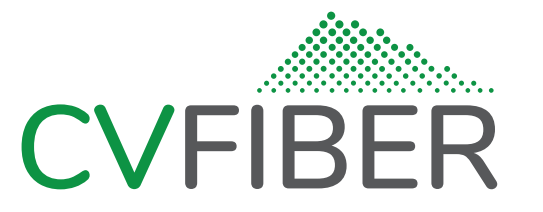IMPORTANT INFORMATION about Funding for Long Drops – Click Here
Conduit Requirements
Installation applies for the first 500 feet of aerial. After 500 feet the
customer would pay $1.75 per additional foot of aerial installation.
The installation fee does not cover conduit and conduit is 100% the responsibility
of the customer.
Specifications for Customer-Installed or Provided Underground Conduit to Premises
A site survey determines the complexity of your installation.
Site surveys locate the closet fiber terminal box to your location, the best route to this terminal along with the measurement to your location, the type of drop that currently exists (aerial or buried), and whether tree trimming and/or traffic control will be required. No appointments are needed for site surveys and they are completed free of charge.
Based on this assessment buried conduit may be recommended prior to installation. If buried conduit is not required, an aerial drop will be noted for your installation.
Contact WCVT
Before installation of conduit, you must contact Waitsfield Champlain Valley Telecom through CVFiber for a site survey at 802-583-4628.
Contact Dig Safe
Dig Safe must be contacted at 811 before any digging is done on your property. In addition, a locator may be necessary to identify any underground utilities including electric and propane. It may be dangerous to dig.
Read Below
We’ve included information based on frequently asked questions. Please read the below and reach out to our technician team for any questions: [email protected].

Waitsfield Champlain Valley Telecom (WCVT) is CVFiber’s operator for our broadband network. WCVT has developed specifications for underground connections to customers’ premises. CVFiber’s policy is to comply with the National Electric and Safety Codes, as well as the specifications of the manufacturers of cable, equipment, and systems within the telecommunications industry.
In general, WCVT’s construction is overhead, placed on jointly used power poles. This type of installation does not require any special action. The following specifications are for customer-installed or provided conduit. If you have any specific questions about conduit or rodding, please contact 802-496-8902.
Customer Installed or Provided Conduit Specifications:
Location
Conduit should go from the utility pole to your house where the utilities boxes are located and follow the route of other underground utilities.
Distance
A minimum 1.5” schedule-40, PVC electrical conduit must be placed for distances under 300 ft from the utility pole to the customer’s demarcation point at the house. Any overall distances longer than 300 ft require 2-inch diameter conduit.
Over 400 feet
Any conduit over 400 ft requires intermediate pull boxes or pedestals.
Utility pole location
Conduit must be 4 ft above final grade at utility pole location (plumb and tight to utility pole and secured). Conduit at the pole side must come up in the same quadrant (same side of the pole) as existing services.
Angles
For long sweeps, no 90-degree elbows or “L” shaped angles are permitted. Fiber cannot be bent at harsh angles as it will cause poor light level and could break, causing future issues.
Structure location
Conduit must be 2 feet above final grade at the outside of house or structure and must be secured. Conduit on the house side MUST come up on the outside of the house.
7. Conduit to mobile home
Preferred method: conduit will be tight to the trailer on the outside of skirting.
Optional method: Conduit run will be a maximum of 2 feet from structure on the outside of skirting to a pressure-treated 4 x 4 post or “H” frame. The pressure-treated post or “H” frame will be a minimum of 4 feet above final grade. A conduit is still required from the H-fixture to the trailer where the fiber will be terminated.
Tracer wire
Owner must install tracer wire (12-16 gauge, coated) on top of the conduit for Dig Safe and future location.
Tensile-strength pull string
All conduits must have a 210-250 lb. tensile-strength pull string installed continuous through the conduit with no knots and no splices. The pull string should extend at least 2 ft beyond the ends of the conduit. Tie the pull string around the outside of the conduit and place an unglued cap over the ends of the conduit to prevent water from entering.
No weather heads
Do not use weather heads. There is too high a risk for fiber to break and interrupt service. Installing temporary (unglued) caps or plastic bags on ends is helpful to keep water out prior to installation. After fiber is installed, we will use a specialized putty to plug the conduit.
Trench
Fiber conduit can be placed in the same trench as the power conduit as long as a minimum 24” depth is maintained. It is advisable to separate the power and telephone conduits by the width of the ditch.
An improper conduit installation will delay your fiber connection for a premises service hook-up.
V1.0 (Adopted 10-15-2022)
CONTRACTOR LIST FOR FIBER OPTIC CABLE CONDUIT INSTALLATION
The following contractors have expressed an interest in performing underground work. CVFiber is providing this list as a convenience to premises owners. It is not a list of “recommended contractors” and so CVFiber makes no representation about the capability, quality, or pricing of these contractors. It is the building owner’s responsibility to ensure all work is performed in accordance with our specifications. As always, if you or your selected contractor have any questions, please contact CVFiber.
| Company | Contact | Phone | Website | Address | |
| Eustis Cable (COMMERCIAL DROPS ONLY) | Andrew Bauer | [email protected] | (800) 550-3565 | Eustis Cable Enterprises | 355 East St, Brookfield, VT |
| JA MacDonald | Jim MacDonald & Dave McShane | [email protected] | (802) 626-5201 | Home (jamcdonald.com) | 585 Gilman Rd, Lyndon, VT |
| K. Bellavance Landworks & Hauling | Kyle Bellavance | [email protected] | (802) 279-8488 | https://bellavancelandworks.com | 69 Pitman Road, Barre, VT |
| Mangan Excavation | Gideon Mangan | [email protected] | (802) 249-6938 | https://manganexcavation.com/ | 530 Houghton Road, Cabot, VT |
| Jody Bayne | Jody Bayne | N/A | (802) 456-8915 | https://m.facebook.com/profile.php?id=100054292999511 | 1494 Bayne Comolli Rd, Calais, VT |
